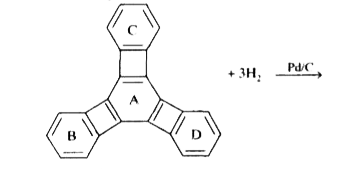For a given cell reaction ,
, the species undergoing reduction is :Solution in Odia
The correct Answer is:C
Step by step video, text & image solution for For a given cell reaction , Cr +3H_2O +OCI^- rarrCr^(3+)+3CI^- 6OH^-, the species undergoing reduction is : by Chemistry experts to help you in doubts & scoring excellent marks in Class 12 exams.
Updated on:21/07/2023Topper's Solved these Questions
Similar Questions
Write the ionisation isomer of [Cr(H2O)5Br]SO4
View SolutionWhat do you mean by primary pollutants?
View SolutionA net cell reaction is given as Cr+3H_(2)O+Ocl^(-)rarrCr^(3+)+3Cl^(-)+6OH^(-) The species undergoing reduction is
View SolutionIO_(3)^(-) + 6OH^(-)+Cl_(2) to IO_(6)^(5-) ("periodate")+3H_2O+2Cl^(-)
View SolutionIn the given reaction, identify the species undergoing oxidation and reduction
(i) Mg+S→MgS
(ii) 2HgO→2Hg+O2
View SolutionE^(@) for two reactions are given below : Cr^(+3) + 3e^(-) to Cr , E^(@) = - 0.74 V Ocl^(-) + H_2O + 2e^(-) to Cl^(-) + 2OH^(-) , 2OH , E^(@) = 0.94 V What will be the E^(@) for 3OCl^(-) + 2Cr + 3H_2O to 2Cr^(+3) + 3Cl^(-) + 6OH^(-)
View SolutionFor a given cell reaction ,
Cr+3H2O+OCI−→Cr3++3CI−6OH−, the species undergoing reduction is :
View SolutionIn the given reaction, identify the species undergoing oxidation and reduction
(i) Mg+S→MgS
(ii) 2HgO→2Hg+O2
View SolutionIO_(3)^(-) + 6OH^(-)+Cl_(2) to IO_(6)^(5-) ("periodate")+3H_2O+2Cl^(-)
View SolutionConsider the given reaction :

In this reaction which one of the given ring will undergo reduction ?
View SolutionConsider the given reaction :

In this reaction which one of the given ring will undergo reduction ?
View SolutionWrite Nernst Equation for the following reactions:-Cr(s)+3Fe3+(aq)→Cr3+(aq)+3Fe2+(aq)
View SolutionThe values of‘x' and 'y'in the following redox reaction are: - xCI_2 + 6OH^(-) to ClO_3^(-) + yCl^(-) + 3H_2O
View SolutionA net cell reaction is given as Cr+3H_(2)O+OCl^(-)rarrCr^(3+)+3Cl^(-)+6OH^(-) The species undergoing reduction is
View Solutionनिम्न अभिक्रिया में ब्रोमीन: 3Br_2+6OH^(-) to 5Br^(-) + BrO_3^(-) + 3H_2O
View Solution
